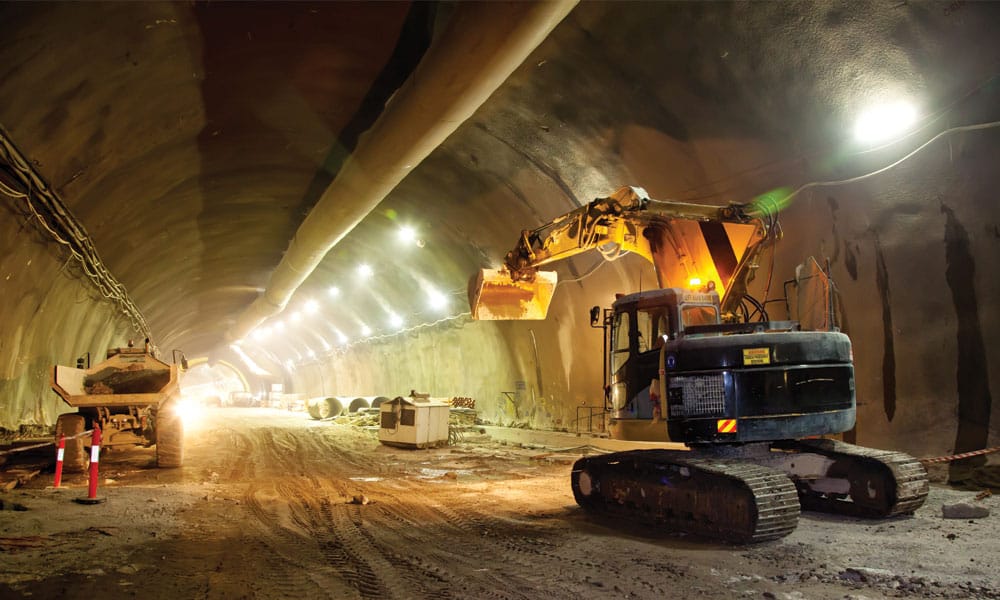Top Benefits of Utilizing Geotheta in Geotechnical Research Study and Applications
Top Benefits of Utilizing Geotheta in Geotechnical Research Study and Applications
Blog Article
Diving Into Geotechnical Solutions: the Essential Role of Soil Evaluation, Quake Threat Evaluation, and Geosynthetics in Structure Lasting and Safe Frameworks
Dirt evaluation, quake danger assessment, and the execution of geosynthetics are important parts that make sure the integrity and long life of structures. By comprehending the make-up of the dirt, predicting seismic threats, and integrating cutting-edge materials, engineers can minimize dangers and enhance the durability of facilities.

Value of Soil Analysis
Understanding the significance of dirt evaluation is important in ensuring the structural integrity and stability of any type of building task. Dirt analysis offers important info concerning the dirt composition, strength, and possible risks that might impact the structure of a framework. By carrying out detailed dirt analysis, designers can figure out the suitable structure layout, construction methods, and essential safety measures to alleviate any kind of prospective dangers.
One of the key reasons soil analysis is vital is its role in identifying soil properties that might impact the security of a building. Variables such as dirt bearing capability, negotiation features, and water content can dramatically influence the structural performance of a construction job. Without appropriate dirt evaluation, the structure might go to danger of resolving unevenly, bring about architectural damage or even collapse over time.
Moreover, soil analysis helps in examining the threat of natural catastrophes such as floods, landslides, or quakes. By recognizing the dirt's actions under different problems, engineers can execute appropriate actions to boost the durability of the framework and guarantee the safety and security of occupants. geotheta. In final thought, dirt analysis is an essential action in the construction procedure that must never ever be neglected
Assessing Earthquake Threats
Given the essential function of dirt evaluation in identifying structural stability, it is vital to also evaluate quake risks when planning and building structures and framework. Quake risk assessment entails examining the potential seismic dangers that a site may encounter based upon its location and geological attributes. This process helps designers and programmers recognize the level of risk presented by earthquakes and help in developing structures that can hold up against such events.
Analyzing earthquake risks usually includes researching historical seismic task in the region, figuring out the site's closeness to geological fault, and assessing the soil structure to anticipate exactly how the ground will certainly reply to seismic waves. By performing a complete quake risk evaluation, engineers can execute proper reduction actions, such as incorporating seismic-resistant style attributes into buildings, to boost their resilience against earthquakes.

Function of Geosynthetics
Geosynthetics play a critical function in boosting the performance and resilience of civil engineering frameworks. One key element of geosynthetics is their support capacity, where they can enhance the toughness of soils, offering boosted assistance for roads, embankments, and maintaining wall surfaces.
They are also used in drainage applications to facilitate the effective flow check it out of water, stopping saturation and erosion of soil. In addition to their technological features, geosynthetics are valued for their sustainability, as they can decrease the requirement for all-natural resources and reduced construction costs.
Building Sustainable Frameworks
The application of environmentally conscious practices in construction is pivotal for fostering the development of sustainable frameworks. Building sustainable frameworks includes making use of materials and style techniques that reduce ecological effect, minimize energy intake, and promote long-lasting resilience. Integrating lasting methods such as utilizing recycled materials, optimizing energy performance, and applying environment-friendly structure certifications like LEED can dramatically enhance the environmental performance of a structure.
One trick facet of structure lasting structures is the reliable use resources. This includes developing buildings that make the most of natural light, air flow, and insulation to reduce the dependence on artificial lighting, heating, and cooling down systems. In addition, integrating renewable power sources such as photovoltaic panels or wind turbines can additionally decrease the carbon footprint of a building while also potentially lowering long-lasting power costs.
Moreover, sustainable frameworks frequently focus on water conservation by integrating features like rain harvesting systems, low-flow fixtures, and drought-resistant landscaping. By taking on these environmentally friendly methods, building and construction jobs can not only decrease their ecological influence yet also add to developing much healthier and more resistant constructed settings for future generations.
Ensuring Safety in Construction
In the realm of sustainable building and construction methods, a basic concern is making certain the safety of all employees included hop over to these guys in the structure procedure. Security in building and construction incorporates numerous facets, consisting of the usage of appropriate individual protective equipment (PPE), adherence to safety methods, regular training on risk recognition and mitigation, and the application of emergency situation feedback strategies.

Conclusion
Finally, dirt evaluation, quake risk evaluation, and the usage of geosynthetics play vital functions in making sure the sustainability and security of structures. By recognizing the properties of soil, evaluating earthquake threats, and using geosynthetics for reinforcement, designers can construct frameworks that are both resilient and resistant. It is essential for construction specialists to focus on these geotechnical solutions to produce safe and lasting structures for the future.
Soil analysis, quake threat analysis, and the implementation of geosynthetics are crucial parts that ensure the honesty and long life of buildings. Dirt analysis supplies necessary details regarding the dirt structure, strength, and potential risks that might influence the structure of a structure.One of the main factors soil analysis is important is its function in recognizing soil properties that could affect the stability of a structure.In final thought, dirt analysis, earthquake danger analysis, and the use Visit Website of geosynthetics play crucial functions in making sure the sustainability and safety and security of structures. By understanding the buildings of soil, examining quake dangers, and using geosynthetics for support, designers can construct frameworks that are both resilient and resilient.
Report this page